Tomb 64
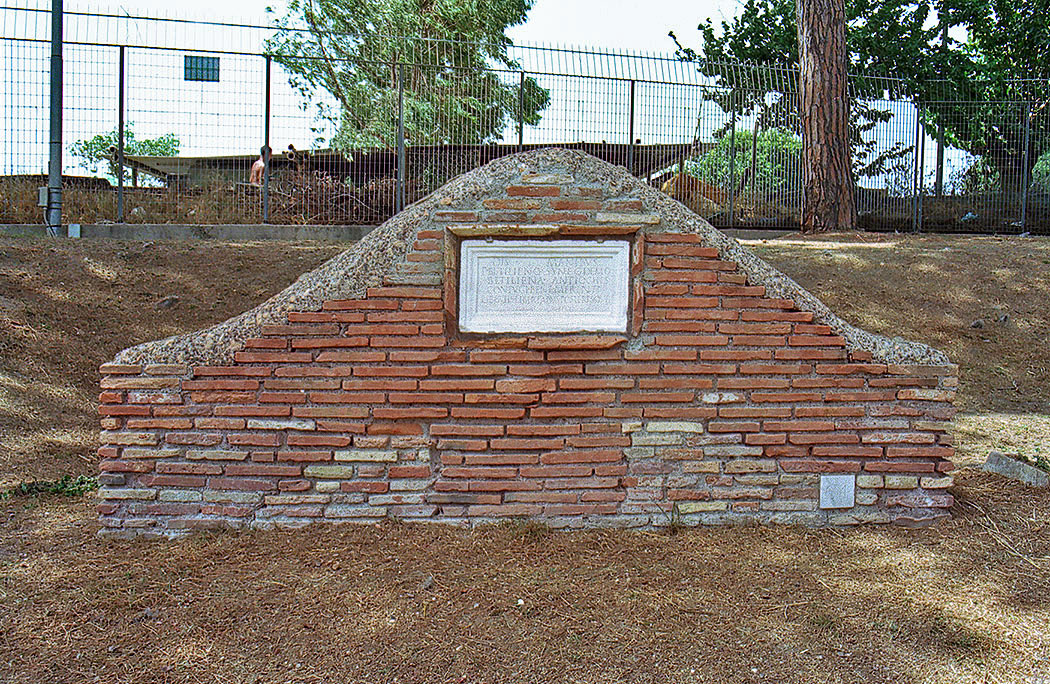
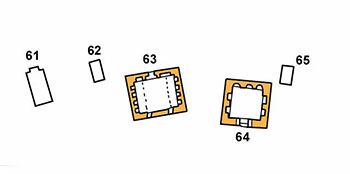
Tomb 64 had a height of 1.30 metres and is the only tomb in this necropolis with the entrance towards the sea.
The inscription on this grave nevertheless points to the main street. It was attached to the back wall:
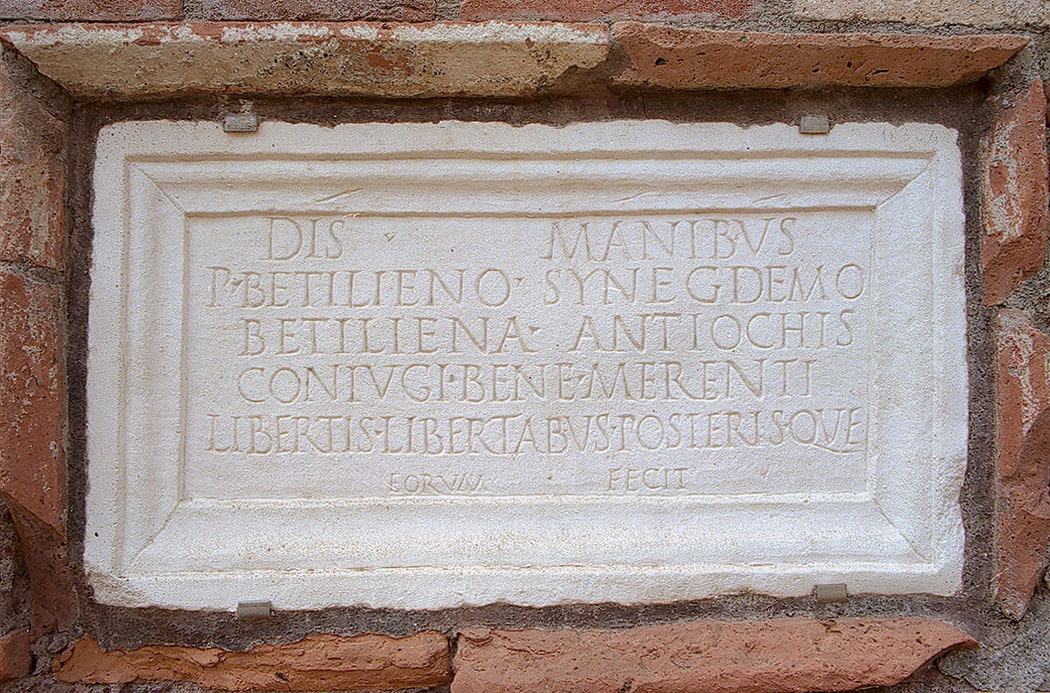
DIS MANIBVS
P(ublio) BETILIENO SYNEGDEMO
BETILIENA ANTIOCHIS
CONIVGI BENE MERENTI
LIBERTIS LIBERTABVS POSTERISQVE
EORVM FECIT
According to this inscription, tomb 64 was built by Betiliena Antiochis for Publis Betilienus Synegdemus, her well-deserving husband, and for their freed slaves, and the descendants.
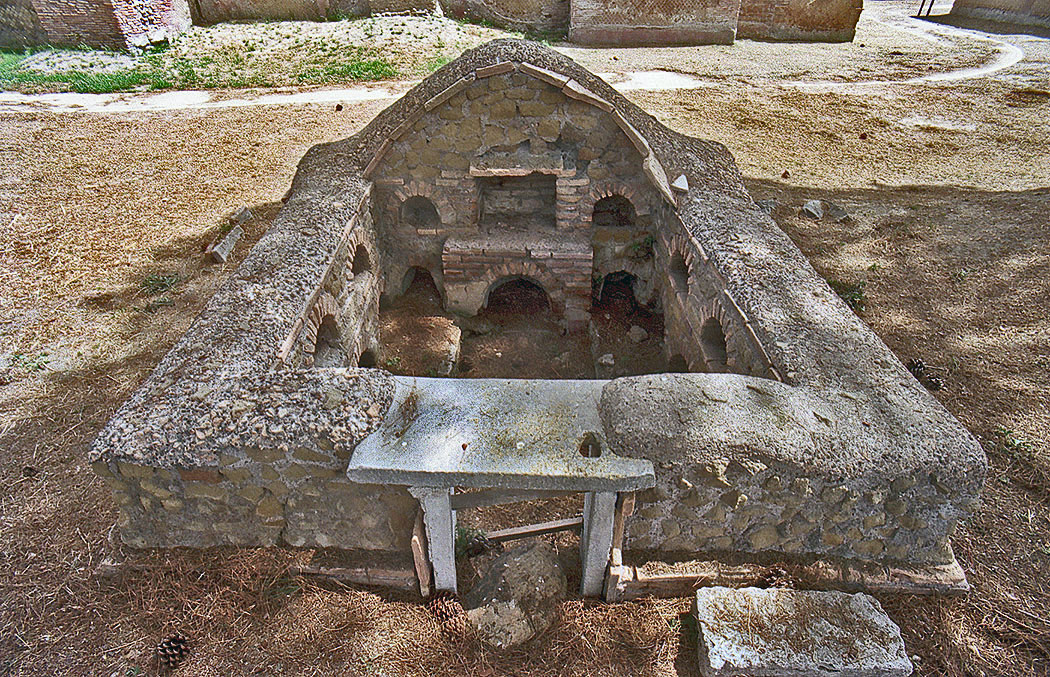
Tomb 64 was used for interring urns. Neither beneath the floor nor alongside the walls traces were found for inhumation burials.
In tomb 64 a marble urn has been found with the name of the donor as well as the name of the person to whom the grave was dedicated in the first place. Probably we have to deal with the ashes of both wife and husband:
D(is) M(anibus) P(ubli) BETILIENI
SYNEGDEMI ET
BETILIENAE ANTIOCHIDI
CVRA
M(arci) COSCONI HYGINI
The donor was Marcus Cosconius Hyginus. The ashes were
of Publius Betilienus Synegdemus and Betiliena Antiochis.
Several stamped bricks were found in this grave, including this one:
SAL(arese) EX PR(aediis) COR(neli) SEVE(ri)
This brick has been made when Cornelius Severus was consul.
Therefore tomb 64 has to be
dated to the time of Trajan or Hadrian.
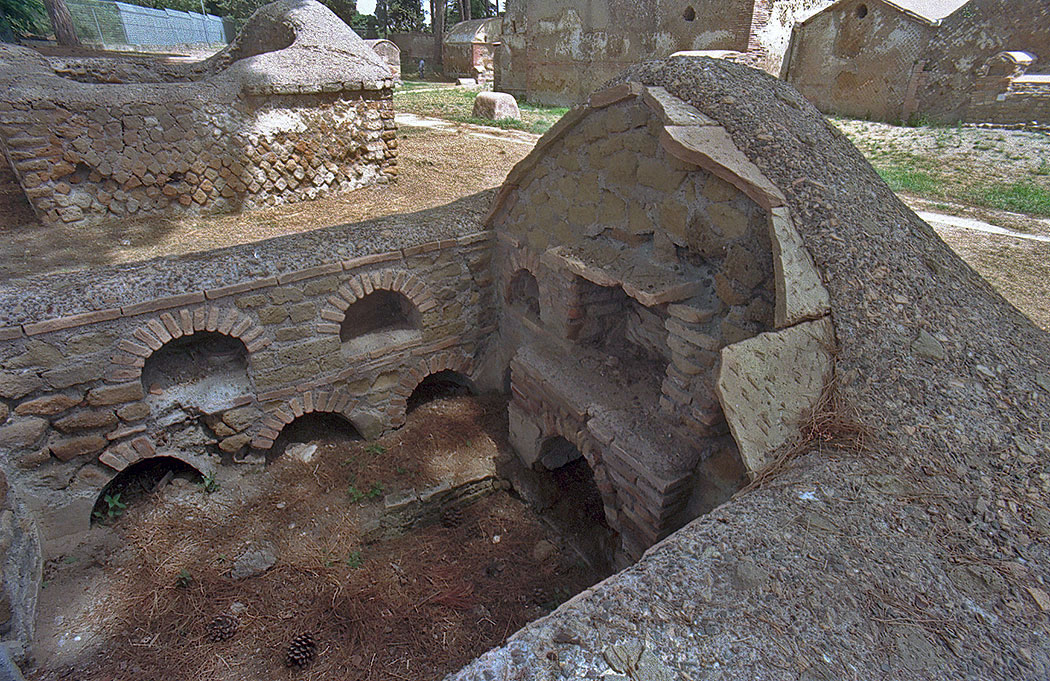
- Sources
- Russel Meigs - Roman Ostia, At the Clarendon Press 1973
- Guido Calza - Necropoli nell'Isola Sacra'(1940)
- Dr. Jan Theo Bakker.
- Hilding Thylander - Inscriptions du port d'Ostie (Lund C W K Gleerup 1952).
- Ida Baldassarre, Irene Bragantini, Chiara Morselli and Franc Taglietti - Necropoli di Porto, Isola Sacra (Roma 1996).
Isola Sacra Index
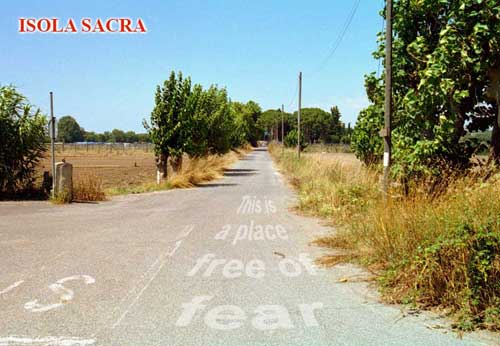
Speciale sectie over de Romeinse begraafplaats van Portus (Engels)....
Read more ...The resurfaced fleet of Pisa

In 1998, an incredible archaeological heritage was discovered by accident near the Pisa San Rossore railway station....
Read more ...Leptiminus
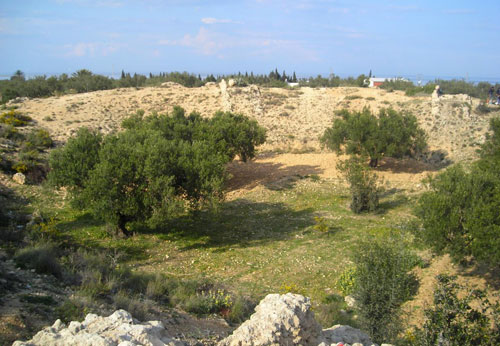
At the site of present-day Lamta on Tunisia's east coast, there was already a port city named Leptis Minor ....
Read more ...Roman maritime trade law

Roman law is the finest monument that Rome bequeathed to Western Europe....
Read more ...Sullecthum (Salakta)

In the Sahel, in the Tunisian province of Madhia, we find by the sea the small town of Salakta....
Read more ...
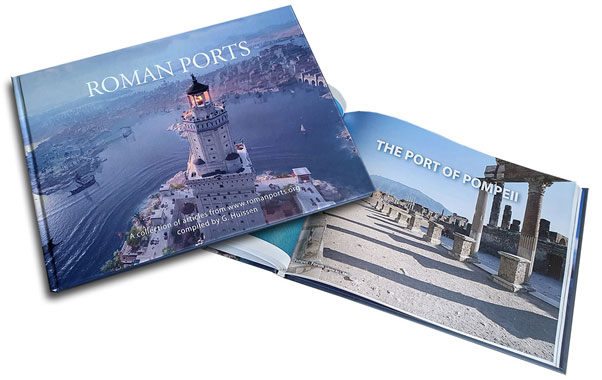
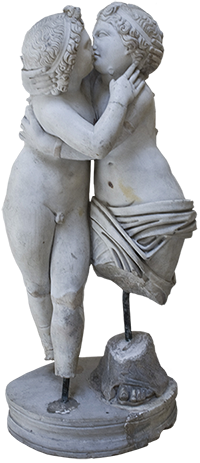 We are committed to providing versions of our articles and interviews in several languages, but our first language is English.
We are committed to providing versions of our articles and interviews in several languages, but our first language is English.